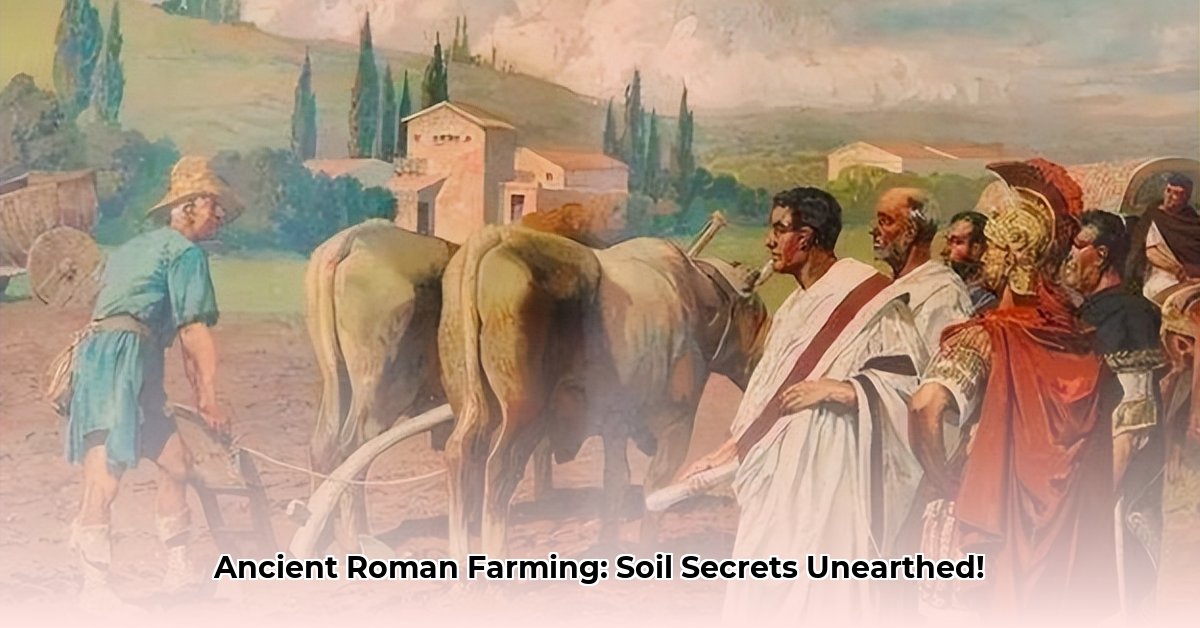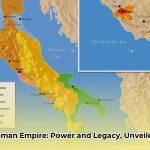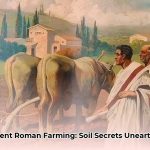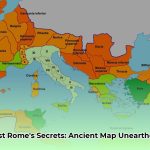Alright, let’s talk farming, Roman-style! Forget the marble temples and gladiatorial arenas for a moment; the true foundation of Rome’s enduring power lay in its fertile fields and the ingenious agricultural practices that fed millions. These weren’t just conquerors of territories; they were also masters of cultivating the land, developing sophisticated methods to sustain one of history’s greatest empires. Remarkably, many of their ancient techniques hold profound, practical wisdom for today’s farms and gardens, offering solutions for contemporary challenges in food production, soil health, and resource management.
This guide will unearth the timeless principles of Roman agriculture, connecting their historical ingenuity to actionable strategies for a more sustainable future.
Core Pillars of Roman Agricultural Mastery
The Roman Empire, a civilization renowned for its architecture and military prowess, was profoundly rooted in agriculture. Rome’s ability to feed its vast population, which peaked at an estimated one million people in the city of Rome alone, hinged on remarkably sophisticated farming methods. Surprisingly, many of their strategies, developed centuries ago, still offer remarkably relevant and practical advice for today’s sustainable farming efforts. Let’s unearth some of these ancient secrets to improve modern agricultural practices.
The Romans weren’t merely scattering seeds and hoping for the best. They were keen observers of nature and developed a deep understanding of how to nurture soil health. They recognized the direct link between rich, vibrant soil and abundant harvests, a connection that remains undeniably true today. Their approach provides invaluable insights for modern growers focused on regenerative agriculture.
I. Soil Stewardship: The Foundation of Fertility
Roman agronomists like Cato the Elder (whose De Agri Cultura is a foundational text), Columella (De Re Rustica), Marcus Terentius Varro (De Re Rustica), and Palladius meticulously documented their observations and techniques. Their writings reveal a deep appreciation for the land’s vitality.
1. Implement Crop Rotation for Soil Vitality
A fundamental lesson from ancient Rome that we often overlook is the strategic practice of crop rotation. The Romans understood that continuously planting the same crop in the same location year after year would inevitably deplete specific soil nutrients. They tackled this problem by rotating different crops, giving the soil a crucial chance to recover and preventing nutrient depletion while maintaining a balanced soil composition.
- Then: Roman farmers strategically split their fields into sections, rotating diverse crops like grains (e.g., emmer, spelt, common wheat, durum wheat, barley), legumes (e.g., lentils, peas, lupines, beans, chickpeas), and even specific fodder crops (like Medic clover, which they knew improved soil). They also incorporated fallow periods, allowing land to rest and rejuvenate. Columella, for instance, noted that emmer was more resistant to moisture than wheat, and Cato advised sowing turnips, panic grass, millet, and rapeseed in humid soils.
- Now: Modern farmers can significantly benefit from this ancient agricultural strategy by implementing a well-planned crop rotation system. This actively avoids the pitfalls of monoculture farming that can critically drain the soil of essential elements, reducing the need for synthetic fertilizers and improving long-term land productivity.
2. Integrate Legumes as Nature’s Own Fertilizer
The Romans instinctively recognized and incorporated the power of legumes into their farming operations. They planted crops such as beans, lentils, lupines, cowpeas, and chickpeas, observing that these plants mysteriously boosted soil fertility. We now understand this is due to their unique, symbiotic ability to “fix” atmospheric nitrogen directly into the soil. This natural process significantly reduces the demand for costly synthetic fertilizers in modern food production. Columella even praised lupinus for requiring “the least labor, costs least, and of all crops that are sown is most beneficial to the land,” highlighting its role as an excellent fertilizer for depleted fields.
* Then: Farmers would consistently rotate nitrogen-fixing legumes with other crops, naturally enriching the soil and providing valuable animal fodder (lupines for cattle) and human food, especially in times of famine.
* Now: Farmers are strongly encouraged to actively integrate legumes into their crop cycles to enhance soil structure and fertility without the environmental impact and expense of chemical fertilizers, aligning with regenerative agricultural practices.
3. Embrace Organic Matter for Enriched Soil
The Romans thoroughly understood the importance of enriching the soil with organic matter. They meticulously collected and used animal manure (with poultry manure considered best, and cow manure among the worst, while sheep, goat, and donkey manure were highly valued), compost, and green manure to nourish their fields. This significantly improved soil structure, enhanced water retention, and boosted overall fertility. Incorporating organic waste into the soil also supported thriving microbial life, which is absolutely crucial for robust plant growth and soil resilience.
* Then: Romans diligently collected and applied various types of manure and compost to revitalize their agricultural lands. Cato the Elder also advised gathering leaves from poplar, elm, and oak trees for fodder.
* Now: Farmers are strongly advised to embrace composting and the responsible use of diverse organic amendments as sustainable ways to profoundly enrich the soil and reduce a costly reliance on synthetic inputs for sustainable cultivation.
4. Soil Classification: Tailoring Crops to Land
Roman agronomists like Columella developed sophisticated understandings of soil types. He categorized land into “champaign” (sloping plains), “hills with a gradual but gentle rise,” and “wooded, verdant mountain highlands.” He also identified six qualities of soil: fat or lean, loose or compact, moist or dry. The best soil, he noted, was fat and loose, requiring the least effort and yielding the most. This detailed knowledge allowed them to match specific crops to the most suitable land.
* Then: Romans understood that “heavy, chalky, and wet” soil suited winter wheat and spelt, while barley preferred “loose and dry” conditions. Volcanic soil in Campania was perfect for wine production.
* Now: Modern agriculture benefits from precise soil testing and geospatial mapping to optimize crop placement, ensuring maximum yield with minimal environmental strain by understanding specific soil needs and characteristics.
II. Water Management: Engineering for Abundance
The Roman Empire’s enduring success was intimately linked to its remarkable mastery of water management. The construction of advanced aqueducts, intricate canal systems, robust cisterns, and water-lifting devices like the Archimedean screw is a lasting testament to their ingenuity and their profound understanding of the critical need for efficient water resource management in feeding their vast population.
1. Prioritize Water Conservation and Efficiency
Water scarcity is an escalating problem globally, making it increasingly important to learn from the water-conscious Romans and their sophisticated hydraulic engineering.
* Then: Elaborate aqueduct systems and expansive reservoirs meticulously channeled water to both burgeoning cities and crucial agricultural areas. They built storage facilities like cisterns to collect and store rainwater for dry periods.
* Now: Modern farmers can make significant strides by investing in advanced water-saving technologies like precision drip irrigation, efficient rainwater harvesting systems, and smart sensor-based systems to proactively address intensifying global water challenges and promote environmental stewardship.
III. Crop and Livestock Diversity: Resilience in the Fields
The Romans intuitively understood that relying solely on a single crop could lead to catastrophic risks. They actively fostered crop diversification, growing a wide array of grains, olives, grapes, and diverse vegetables across their territories. This strategy not only ensured varied nutrition for their citizens but also built inherent resilience against localized pests and prevalent diseases. A diversified farming approach effectively guaranteed a stable food stream, even when one particular crop suffered.
1. Diversify Your Plantings for Stability
Monoculture farming, while often yielding high immediate returns, makes crops incredibly vulnerable to environmental issues and market fluctuations. As a result, a diversified farming system is inherently better suited for long-term sustainability and resilience.
* Then: Romans diligently cultivated a rich mix of staple crops like wheat (especially durum wheat for urban Romans), barley (important for feed and poorer soils), olives (providing essential fats), and grapes (for ubiquitous wine production). Beyond these primary crops, they grew an impressive array of fruits and vegetables, including artichoke, mustard, coriander, rocket, chives, leeks, celery, basil, parsnip, mint, rue, thyme, beets, poppy, dill, asparagus, radish, cucumber, gourd, fennel, capers, onions, saffron, parsley, marjoram, cabbage, lettuce, cumin, garlic, figs, “Armenian apricots,” plums, mulberries, peaches, and hemp.
* Now: Farmers are strongly encouraged to grow a wide variety of crops to significantly enhance their resilience to the impacts of climate change and potential disease outbreaks, fostering more robust food systems and promoting biodiversity.
2. Integrated Livestock Management
Roman farms were not just about crops. Livestock played a crucial role in the integrated agricultural system. Oxen and mules provided draft power for plowing and transport, cows produced milk, and sheep and goats were vital for cheese and hides. Horses were less common in farming but raised for racing or war. Beekeeping was central to sugar production (honey), and some Romans even raised snails or rats as luxury foods. The integration of animals provided manure for fertilization and a diversified food source, embodying a holistic approach to farming.
* Then: Animals were essential for labor, food, and fertilizer, creating a closed-loop system where waste became a resource.
* Now: Modern sustainable farming increasingly embraces integrated livestock management, recognizing its benefits for soil health, nutrient cycling, and diversified income streams.
IV. Tools and Technology: Innovation in Ancient Fields
Roman farmers used a variety of tools, many of which were simple but effective, often made of wood with iron tips. However, they also adopted and developed more advanced mechanical devices.
1. Basic Tools and Mechanization
The fundamental tools included the ard (a simple plough), sickles for harvesting, and hoes for weeding and preparing soil. Roman advancements extended to more complex machines, demonstrating their innovative spirit.
* Then: The ard prepared the soil, while sickles were the primary harvesting tool. For threshing, the tribulum (a wooden board with metal or stone fragments) was dragged over grain. More notably, vertical water wheels were described by Vitruvius and Pliny the Elder, used not just for grinding grain (as seen at Barbegal in southern France, which could supply flour for 12,500 people daily) but also for powering mines. Northern Gaul even saw the use of the “vallus” or “Gallic vallus,” an ox- or horse-pushed harvesting machine that cut grain ears without the straw, though its use was not widespread.
* Now: Modern agriculture benefits from vastly more advanced machinery, yet the principle of optimizing tools for efficiency and labor reduction remains a core tenet, from GPS-guided tractors to automated harvesting systems, reflecting the Roman pursuit of productivity.
V. Economic and Social Structures: The Human Landscape of Roman Agriculture
Understanding Roman agriculture requires looking beyond techniques to the economic and social fabric that supported it, including land ownership, labor, and distribution networks.
1. Land Ownership and Farm Sizes
Farm sizes in Rome varied significantly: small farms (18–108 iugera, a iugerum being 0.65 acres), medium farms (80–500 iugera), and large estates called latifundia (over 500 iugera). Land ownership was a dominant factor distinguishing the aristocracy from common people, and soldiers were often rewarded with land. The shift from small, family-owned farms to larger estates, particularly latifundia, became increasingly prevalent from the late Republican era, often fueled by wealthy Romans acquiring land from peasant farmers struggling to compete or absent due to military service.
2. Farm Management Systems
Romans employed four main systems:
* Direct work by owner and family: Common on small farms.
* Tenant farming/sharecropping: Owner and tenant divided produce.
* Forced labor by slaves: Prevalent on latifundia, supervised by slave managers (vilici). Cato the Elder described a 100-iugera farm needing 16 people (including a foreman and wife, 10 laborers, ox driver, donkey driver, willow grove manager, swineherd) plus animals and equipment, providing detailed slave rations for grain, wine, oil, salt, and clothing, highlighting the systematic, often brutal, management of enslaved labor.
* Leasing land to a tenant: Another arrangement for landowners.
3. The Grain Supply and “Cura Annonae”
Grain, especially baked into bread, provided 70-80% of calories in the average Roman diet. Supplying the city of Rome, which could house a million people, required an immense amount of grain (estimated at 150,000 to 237,000 tonnes annually). This task, known as the Cura Annonae, relied heavily on imports from Sicily, Egypt, and North Africa (particularly Carthage). Egypt became the primary source under Emperor Augustus. The policy of distributing free grain (and later bread, oil, pork, wine) to Roman citizens, starting in 58 BC, further emphasized the critical importance of a stable grain supply and its impact on urban population growth and social welfare.
4. Agricultural Trade and Challenges
Rome’s extensive road and maritime trade networks facilitated the movement of grain, olive oil, and wine across the empire, fostering economic and cultural exchange. Despite their successes, Roman farmers faced perennial challenges: unpredictable weather, rainfall variability, pests, and crucially, land conflicts and invasions due to the empire’s vast conquests and internal strife. Slave rebellions also added to the landowners’ woes, occasionally destroying agricultural holdings.
The Rise and Fall of Latifundia: A Cautionary Tale
The gigantic agricultural estates known as latifundia, initially seemed like a stroke of genius for the Roman economy. They could produce food on a truly massive scale, predominantly relying on enslaved people for labor. But how did latifundia fail? It wasn’t one single catastrophic event, but rather a slow, insidious combination of interconnected factors that gradually eroded the Roman Republic from within.
Think of it like a field that is constantly planted with the exact same crop, year after year. Initially, yields are incredibly high. Over time, however, the soil becomes deeply exhausted, requiring more and more external inputs to simply maintain production. Doesn’t this sound eerily familiar to some situations we face today in modern agriculture?
Seeds of Destruction: Unsustainable Practices
The inherent reliance on intensive farming practices on latifundia, most likely including extensive monoculture, would have severely harmed the land and drastically reduced biodiversity over time. This mirrors historical environmental disasters, much like the Dust Bowl from our own past. The relentless pursuit of maximum yields, frequently at the significant cost of environmental health, is a troubling pattern that has repeated across centuries.
The Human Cost: Displacement and Discontent
One of the most profound and far-reaching consequences of the rampant spread of latifundia was the widespread displacement of small, independent farmers. These farmers, once the very backbone of Roman society and its military, were rendered unable to compete with the vast, slave-powered estates. Displaced from their ancestral land (often due to prolonged military service during the Punic Wars, which forced them to neglect their farms or sell them cheaply), many were forced to migrate to the burgeoning cities, swelling the ranks of the unemployed and creating a volatile, discontented underclass. This growing urban poor contributed significantly to social unrest and the political tensions that characterized the late Roman Republic. Does this historical pattern resonate with contemporary social challenges?
Echoes in Modern Agribusiness
The story of latifundia resonates deeply with modern concerns about large-scale agribusiness. Just as these huge estates squeezed out small farmers in ancient Rome, today’s globalized food system often disadvantages local and sustainable producers. The reliance on forced labor also brings up profound concerns about social justice and fundamental human rights, which are absolutely key components of today’s comprehensive sustainability initiatives. Are we truly learning the crucial lessons from our agricultural history?
A Glimmer of Hope: The Gracchi Brothers
Not everyone stood idly by as latifundia expanded unchecked. The Gracchi brothers, Tiberius and Gaius, courageously attempted to enact land reforms aimed at redistributing land to the poor and limiting the immense size of these vast estates (e.g., Tiberius Gracchus’s proposed limit of 500 iugera per citizen in 133 BC). However, their progressive efforts were met with fierce and violent resistance from the entrenched wealthy elite, tragically highlighting the deep-seated power imbalances within Roman society and the challenges in reforming deeply entrenched economic systems.
Integrating Roman Wisdom into Modern Agriculture
The enduring legacy of ancient Roman agriculture offers profoundly valuable lessons for modern food systems. These time-tested strategies can effectively guide sustainable practices for a diverse range of stakeholders in today’s complex agricultural landscape.
| Stakeholders | Actionable Steps |
|---|---|
| Farmers | Adopt comprehensive, multi-year crop rotation plans that integrate diverse families of plants, utilizing nitrogen-fixing legumes like cover crops to naturally enrich soil. Embrace various organic fertilizers (e.g., diverse animal manures, rich compost, green manures) to significantly enhance soil structure, water retention, and microbial biodiversity. Invest strategically in advanced water conservation technologies, such as precision drip irrigation or smart rainwater harvesting systems, to maximize water use efficiency. Diversify crop selection beyond monocultures to build resilience against climate variability, pests, and diseases, ensuring a more stable and varied output. |
| Policymakers | Incentivize sustainable farming practices through targeted subsidies, grants, and innovative tax benefits for methods like regenerative agriculture, organic certification, and water-efficient technologies. Promote fair labor practices and equitable land distribution policies across the agricultural sector, learning from the historical pitfalls of latifundia. Invest strategically in agricultural research and development focused on long-term soil health, drought-resistant crops, efficient water management, and climate-resilient farming techniques that support both commercial and smallholder operations. Develop robust infrastructure for local food distribution and market access. |
| Urban Consumers | Actively support local farmers’ markets, Community Supported Agriculture (CSA) programs, and direct-to-consumer initiatives to strengthen local food systems and connect with producers. Prioritize the reduction of household food waste through conscious consumption, proper storage, and composting. Consciously support businesses and food brands demonstrably committed to environmental sustainability, ethical labor practices, and transparent supply chains, voting with purchasing power for a more responsible food system. Learn about seasonal eating and the origins of food. |
| Agricultural Technology | Innovate and create affordable, scalable soil monitoring technologies (e.g., IoT sensors, drone-based analysis) that provide real-time data on nutrient levels, moisture, and soil health indicators. Develop automated systems and precision agriculture tools that reduce manual labor demands, optimize resource allocation (water, fertilizer, pesticides), and improve efficiency. Engineer genetically diverse, climate-resilient crop varieties that are naturally drought-resistant, pest-resistant, and high-yielding using advanced breeding techniques, ensuring food security in a changing climate. Develop robust blockchain solutions for enhanced supply chain transparency and traceability from farm to fork. |
| Researchers/Historians | Diligently search ancient Roman farming texts and archaeological findings for new insights into historical ecological adaptations and agricultural systems. Rigorously analyze the long-term socio-economic and environmental factors that contributed to the growth and eventual decline of different Roman agricultural models, drawing parallels and lessons for contemporary challenges. Widely disseminate the invaluable knowledge gained from both historical and modern agricultural studies for contemporary application through publications, educational programs, and public engagement initiatives, fostering a deeper understanding of food systems across time. |
Rome was certainly not built in a day, and neither is a truly sustainable farming system. However, by drawing profound inspiration from the ingenuity and resilience of Roman farmers, we can collectively make significant strides toward cultivating a greener
- Unearth ancient rome roads: Empire’s power and modern highway’s origin - August 15, 2025
- Discover geography of ancient Rome: Empire’s secrets revealed (2024 insights) - August 15, 2025
- Unveiling Ancient Roman Empire Geography: Power & Legacy Secrets - August 15, 2025
















